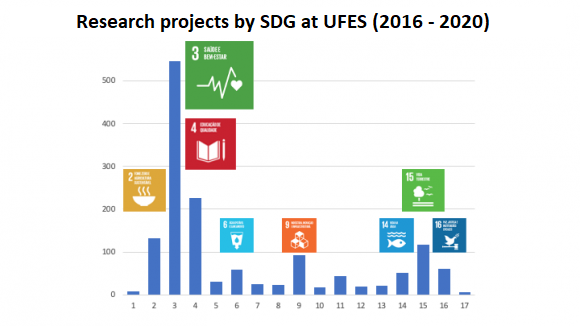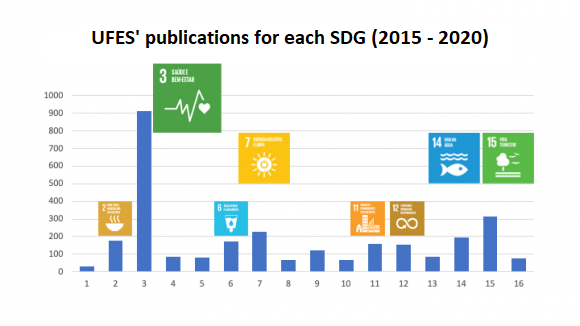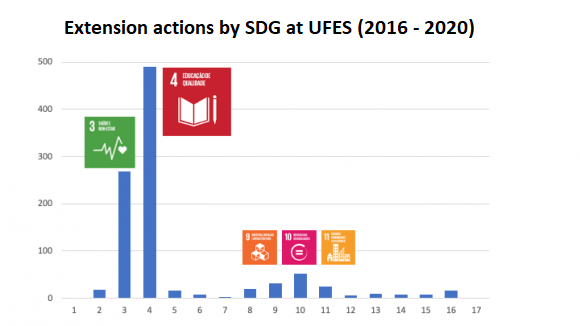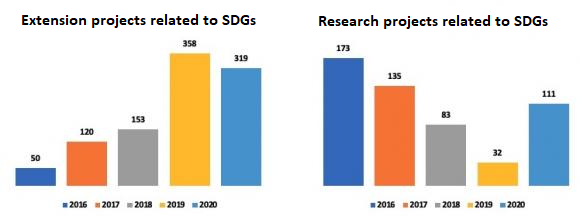Research and extension
The contribution of universities to the SDGs occurs in 4 dimensions: teaching, research, extension and management. The first step towards engaging in the SDGs is to map what the university is already doing related to them. UFES started by mapping research and extension developed projects, revealing actions in all 17 SDGs. As a highlight, we have the largest number of research projects aligned with the following objectives: SDG 3 (health and well-being), SDG 4 (quality education), SDG 2 (zero hunger and sustainable agriculture) and SDG 15 (land life), as seen in the chart below.

Another way to account for UFES' research actions linked to the SDGs is to analyze scientific publications. There were almost 3,000 scientific articles published from 2015 to 2020 that are aligned with at least one SDG. Again, SDG 3 (health and well-being) predominates with more than 900 scientific articles, followed by SDG 15 (terrestrial life) with more than 300 articles, SDG 7 (clean and accessible energy) with more than 200, and SDG 14 (life in the water) with nearly 200 articles. Also worth mentioning are SDG 2 (zero hunger and sustainable agriculture), SDG 6 (drinking water and sanitation), SDG 11 (sustainable cities and communities) and SDG 12 (responsible consumption and production), as we can see below.

Extension actions, which directly impact the community outside UFES, focus mainly on SDG 4 (quality education), followed by SDG 3 (health and well-being), then SDG 10 (reduction of inequalities), SDG 9 (industry, innovation and infrastructure) and SDG 11 (sustainable cities and communities), as shown in the chart below.

More than 3,200 extension and research projects registered in the Pro-Rectories of Research and Graduate Studies (PRPPG) and Extension (Proex) were analyzed in order to identify those that were in line with some of the 17 SDGs, from the year following the implementation of the 2030 Agenda (September 2015).

Source: Lucas José Teodoro Lobato and Fernando Dangremon Viana (2021)
